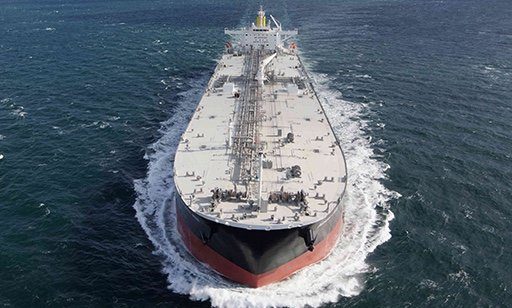New report urges shipping to build on aviation’s sustainable fuel lead

Not for the first time in recent weeks shipping has been urged to take a leaf out of the aviation playbook in terms of how it tackles its carbon footprint.
Shipping, as aviation, should ensure that all the emissions from a fuel – from the production to the distribution to the combustion itself – are accounted for if we are to understand the real climate impact
A new 28-page report issued today by Environmental Defense Fund and the influential University Maritime Advisory Services (UMAS) states that shipping will fail to tackle its global greenhouse gas emissions unless it puts in place rules that truly reflect the climate impact of shipping fuels.
The report is the first of its kind to explore whether the processes for delivering rules for sustainable marine fuels can be sped up using lessons learnt from aviation, a sector facing similar challenges in transitioning to sustainable alternative fuels.
The report considers how sustainable aviation fuels (SAF) or eligible fuels elements of the International Civil Aviation Organization’s (ICAO’s) market-based climate program, the Carbon Offsetting and Reduction Scheme for International Aviation (CORSIA), could be adopted in the context of shipping. The analysis shows that ICAO’s SAF framework offers a solid blueprint for the shipping sector. The report also identifies areas where the IMO should be more ambitious than ICAO to ensure that shipping transitions away from fossil fuels.
“The International Maritime Organization and the shipping industry need to put in place the right rules for alternative fuels to truly drive the decarbonisation of the sector and it does not need to start from scratch. The rules recently adopted by ICAO offer valuable lessons and a good starting place for the IMO to chart its course toward a genuinely sustainable shipping sector,” said Aoife O’Leary, director with the Environmental Defense Fund.
In the absence of robust accounting rules, the climate benefit of alternative fuels can be completely undermined, the report warns. Shipping must adopt a full lifecycle perspective, accounting for all greenhouse gas emissions, including methane – a likely swipe at LNG, and ensure accurate calculations of both the direct and indirect impacts of emissions associated with the whole supply chain (extraction/production, transport/distribution and combustion) of the fuel.
The study calls for the application of careful rules to ensure that the use of biofuels has a real climate benefit.
“Shipping must ensure that biofuels are not automatically granted a zero-emission status,” the report states.
The CORSIA framework in aviation sets out explicit rules for calculating emissions reductions for each biofuel pathway. It does not automatically allow all biofuels to claim zero carbon combustion emissions as some other emissions accounting systems have done, as their lifecycle emissions can in some cases approach or even exceed those of petroleum fuels.
The report warns the IMO not to create perverse incentives which could promote fuels that could worsen the climate crisis.
“Using the most appropriate science is key to making the right decisions for our environment. Shipping, as aviation, should ensure that all the emissions from a fuel – from the production to the distribution to the combustion itself – are accounted for if we are to understand the real climate impact. A meaningful policy must incentivise a fair, sustainable and non-perverse shift away from fossil and avoid the risk that emissions are simply shifted elsewhere. Getting this right is mission critical to the shipping industry’s decarbonisation pathway,” said Dr Nishatabbas Rehmatulla, senior researcher at UCL and principal consultant for UMAS.
The authors also call on the IMO to adopt strict rules on transparency to ensure that shipping companies accurately report their emissions, and don’t double count emission reductions.
The topic of aviation and maritime joining forces to develop new clean fuels was brought up during Capital Link’s digital forum last month by Knut Ørbeck-Nilssen, the CEO of DNV GL Maritime.
Esben Poulsson, chairman of the International Chamber of Shipping (ICS), commented that shipping had had close dialogue with the International Air Transport Association (IATA) during the crew change crisis.
“I found them very, very responsive and quick to come back to us,” Poulsson said, adding: “I think in the future there could be some cooperation and collaboration with the airline industry.”
Splash also reported last month how a front-runner for the next generation of green fuel for the aviation industry could be used for ships.
Oslo-headquartered Norsk e-Fuel is a newly-established industry consortium building Europe’s first commercial plant for hydrogen-based renewable aviation fuel.
The group comprises German power-to-liquid specialist Sunfire, Zurich-based carbon capture expert Climeworks, engineering, procurement and construction company Paul Wurth and green investor Valinor, which owns Norway’s largest private wind power developer Norsk Vind.
Norsk e-Fuel will make use of Sunfire and Climeworks’ technologies to build plants that will convert into syngas renewable electricity, water and carbon dioxide (CO2) captured from ambient air and unavoidable CO2 sources. This syngas will be used for the production of renewable fuels through further processing and refining.
The first such facility is planned to open at the Heroya Industry Park in Porsgrunn by 2023 with an initial capacity to produce 10m litres of renewable fuel per year. There are plans to expand it to 100m litres annually by 2026.
